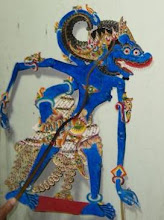The good:
- Both Nicola and Lorenzo said they enjoyed the game.
- The fundamental concept of the game is indeed viable.
- The basic structure of it appears to hold water (ah-ah!).
- The game sort of automatically generates actual play reports. I didn't think of it, so kudos to Nicola for pointing this out.
- Intelligent apes with jedi swords. No kidding. And ancient table forks.
The bad:
- Too long! I was aiming for 3 hrs or less, but hadn't we improptu cut it short by arbitrarily removing a round of Charts from Open Sea mid-game, it would have lasted 4 hrs or more.
- Too exhausting! My brain still haches from the effort of keeping all the pieces of information together. Two hours and a half into the game, I had an expression of pain on my face and was longing for it to end... I was almost crying for sweet, sweet release! (Luckily, my friends disagree with me, or so they say. Is this a game for murder mistery enthusiasts, maybe?)
- My math sucks! All of the dice rolls were piece-of-cake, with base numbers no lower than twice the target numbers. Not a single player marked any Xs on his character sheet in the whole game.
- Too much writing, and too much time spent writing. The worst is, I still can't think of a workaround.
- There are a few grey areas in the mechanics, in dire need of clarification or - you know - to actually be designed. No big deal: this is what playtesting is for.
Things I'm probably going to change in the next playtest run (and I suggest you consider in case you do attempt to play the game):
- Each player only prepares 3 "Charts" (one per type, period). You still discard one per type before starting the game, so you're going to have a total of 6 in play (instead of 9).
- The Tangle Rating only increases by 1 per 4 scenes played (as opposed to 3). It does not further increase with Acts concluding (which was a mess anyway): just count scenes.
Also, a very special and heartfelt thank goes to the overwhelmingly awesome Dan Maruschak, who took the time to wade through the linguistic horror of my draft and provide precious editing suggestions. A native-English-speaker editor! I still can hardly believe so much kindness exists in the world, but here's proof it does.
I will integrate Dan's corrections in the next draft (be it an Alpha.2 or a Beta version), together with any substantial changes emerging from playtests.
Thanks again, Nicola, Lorenzo and Dan!








